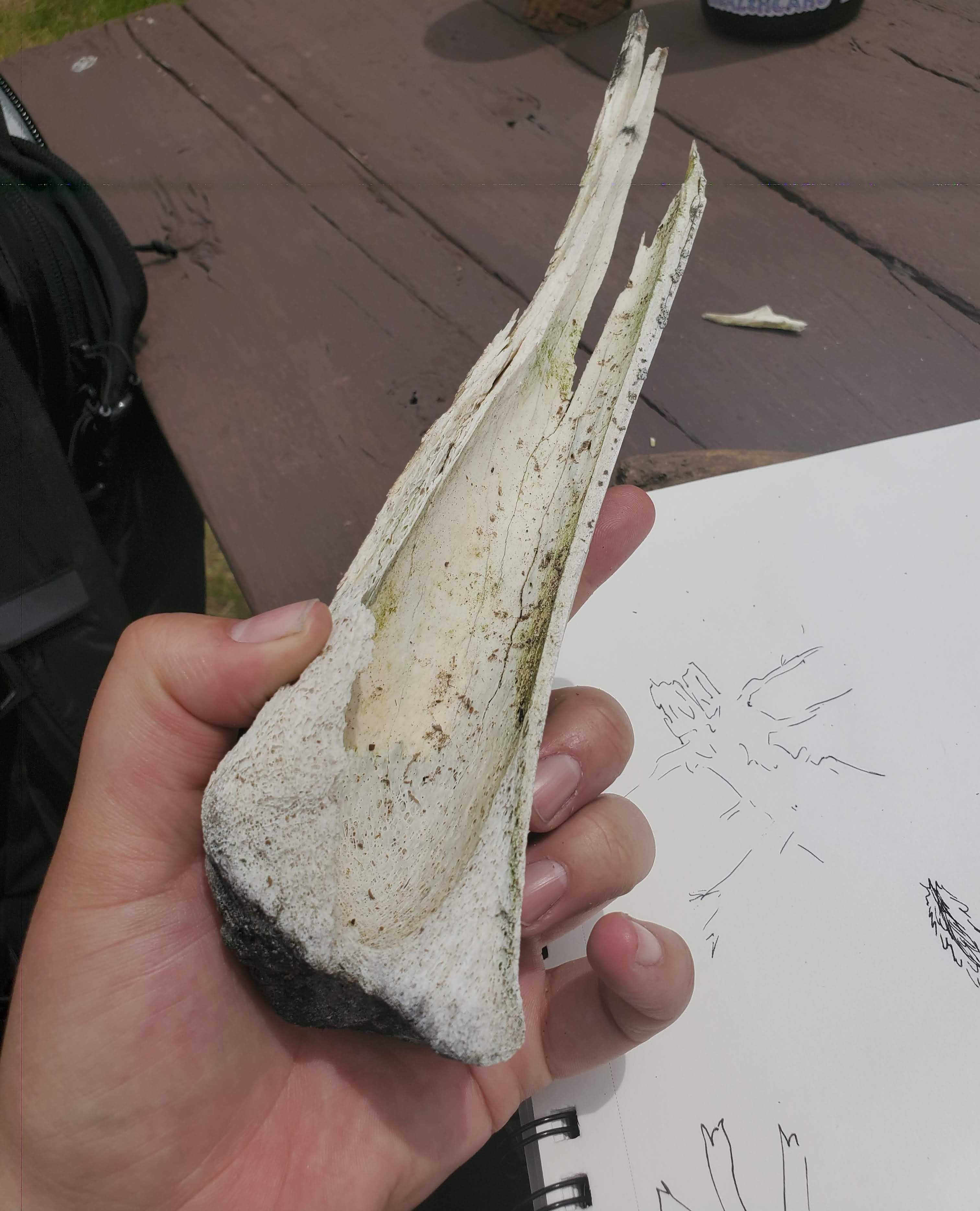Have you ever found a cool bone, some critter’s tooth, or a pile of fur? Maybe a whole rabbit on the side of the road? You might even already have a small collection of feathers or shells. This practice of finding and collecting dead things is dubbed “vulture culture” and has gained in popularity in the past few years. How do you start? It comes down to luck and knowing where to look, but most importantly it’s about respecting the animal you find and knowing when to let things be. The “leave no trace” philosophy of leaving things as you find them is best kept in mind as someone advances into this hobby, especially here in the SNRA and wilderness areas.

First of all, know your laws! We have a very strict Migratory Bird Treaties Act, or the MBTA, in the United States. This applies to almost all birds and was put in place in 1918 to stop the hunting of birds for fancy hats, much like what happened with the beaver. Most feathers from birds are illegal to possess, except invasives like starlings or ring-necked doves. Always do some research before picking up bird bits!
You can also find a list of fur bearing animals you can and can’t keep before registering what you find on the Idaho Fish and Game website. Since 2012 they’ve allowed people to register roadkill or other findings that are out of season and aren’t protected, like deer, elk, and moose. It’s very convenient!
Here in the SNRA and in the wilderness areas, there are restrictions to what you can keep. Although you can legally hunt in the wilderness, you are not allowed to find and take bones, feathers, fur, or any bit of an animal you find. Take a picture instead! The same goes for all national parks, which often have strict laws about scavenging. Always research the salvage laws in your area whenever you find something you want to take. Public lands, however, are much more open to scavenging. A small game permit or just registering what you find, depending on the species, is enough to start collecting

One of the most important aspects of vulture culture is respecting the animal you found and understanding the role its body plays in the ecosystem. I take less than 10% of the bones and bits I find, as bones are an important source of calcium for rodents and even deer that can sometimes be spotted chewing on them. Fur and feathers take a long time to decompose and are used as nesting materials for rodents and birds. One of my favorite animals, the turkey vulture, will smell a rotting carcass from over a mile away. Coyotes, crows, skunks, and even bald eagles rely on a free stinky dinner to survive as well. In this delicate alpine environment where bodies decay slowly the microbes and fungi in the soil will take anything they can get. Only take a little of what you find and leave the rest for nature to reclaim.
Finding a pristine skull, especially with all its teeth in, is a treat. I most often find rodent and deer skulls while hiking on public lands and always have an eye out for a flash of white bone or the smell of decay. The sides of roadways and railroad tracks are also a great place to find bones and carcasses, but this can be dangerous so always be cautious. If you decide you don’t want to take what you find home, or only want parts of it, I recommend moving the carcass as far away from the road as possible to prevent scavengers from being the next victim of a car or train.
I most recently found a snowshoe hare on the side of ID 75 and currently have the feet drying in salt and borax, they’re very fluffy! Have fun scavenging, and always do your research before taking anything.
Heath is a naturalist at SIHA. He spends his time making art, hiking, and relaxing in hot springs when he’s not out looking for bones.
